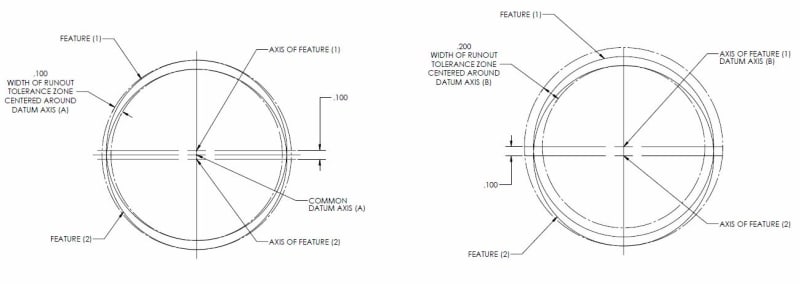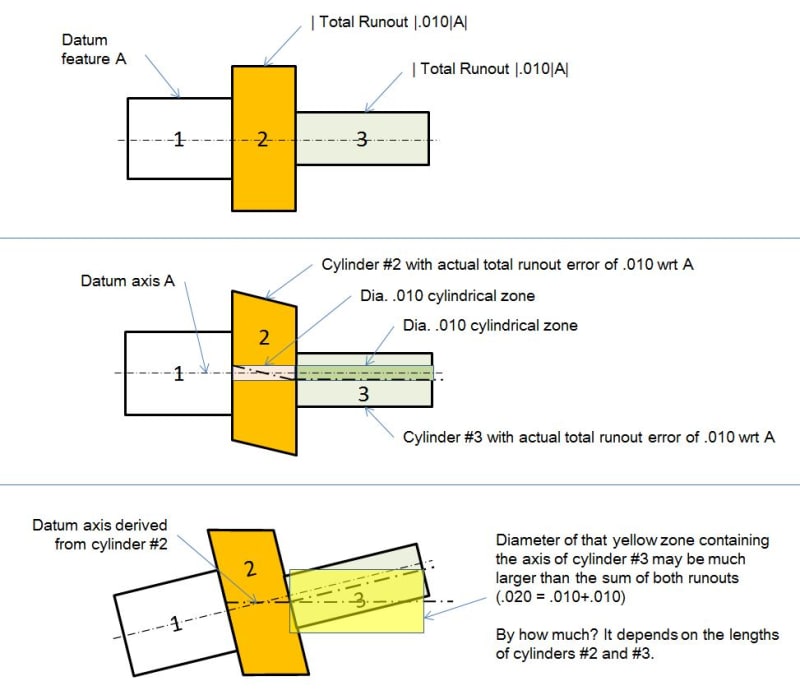MartoL
Mechanical
- Jun 7, 2005
- 2
Hi All
My company are manufacturing a 1800mm shaft for a company. There are 3 diameters on this shaft each with a separate Total Runout specified of 0.076mm
My question is this: If diameter A run out is 0.05 (positive direction on clock) and then diameter B run out is -0.03 (negative direction on clock) then does this mean that the Total runout is 0.080mm ove the two different diameters?
My customers engineer seems to think so but i am not so sure i believe that they are to be assessed individually. I have read the ASME Y14.5 - 2009 standard and it does not advise of any cumulation over different diameters.
I have read thru various posts but none seem to deal with this
Thank you in advance
Martin
My company are manufacturing a 1800mm shaft for a company. There are 3 diameters on this shaft each with a separate Total Runout specified of 0.076mm
My question is this: If diameter A run out is 0.05 (positive direction on clock) and then diameter B run out is -0.03 (negative direction on clock) then does this mean that the Total runout is 0.080mm ove the two different diameters?
My customers engineer seems to think so but i am not so sure i believe that they are to be assessed individually. I have read the ASME Y14.5 - 2009 standard and it does not advise of any cumulation over different diameters.
I have read thru various posts but none seem to deal with this
Thank you in advance
Martin


